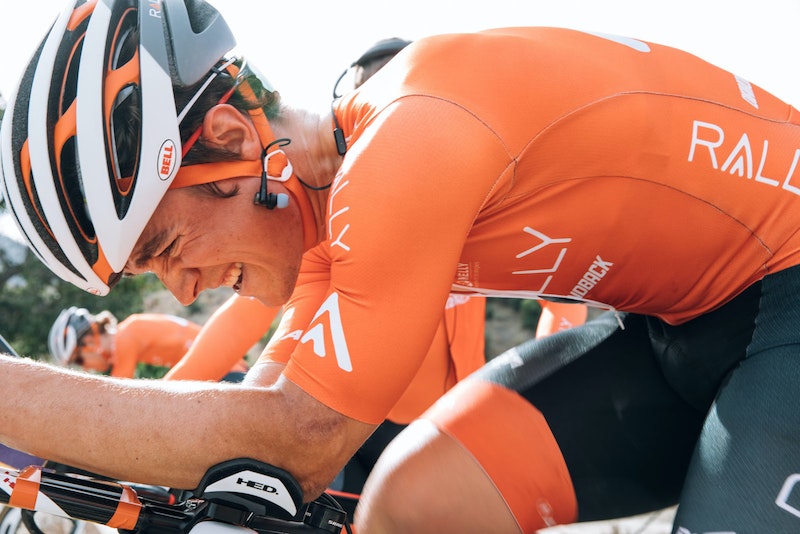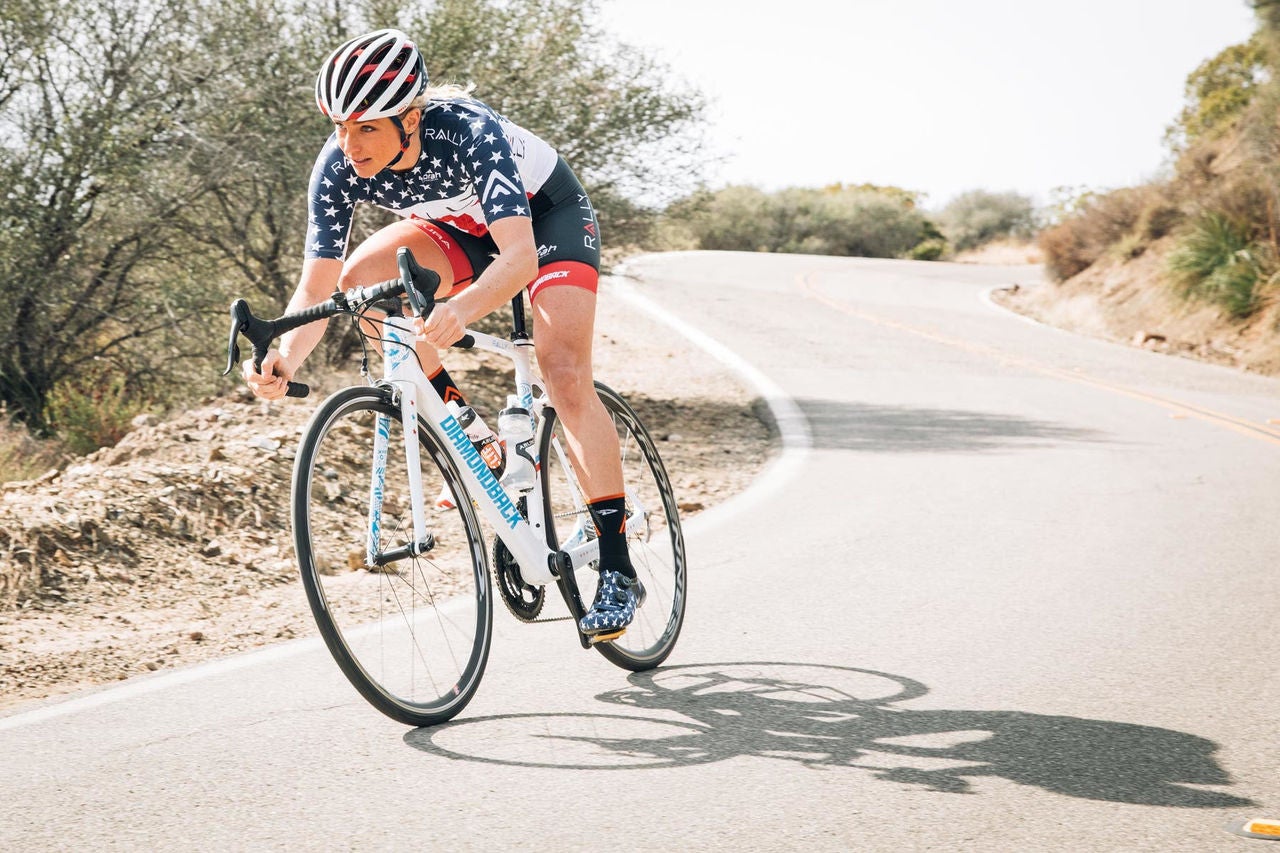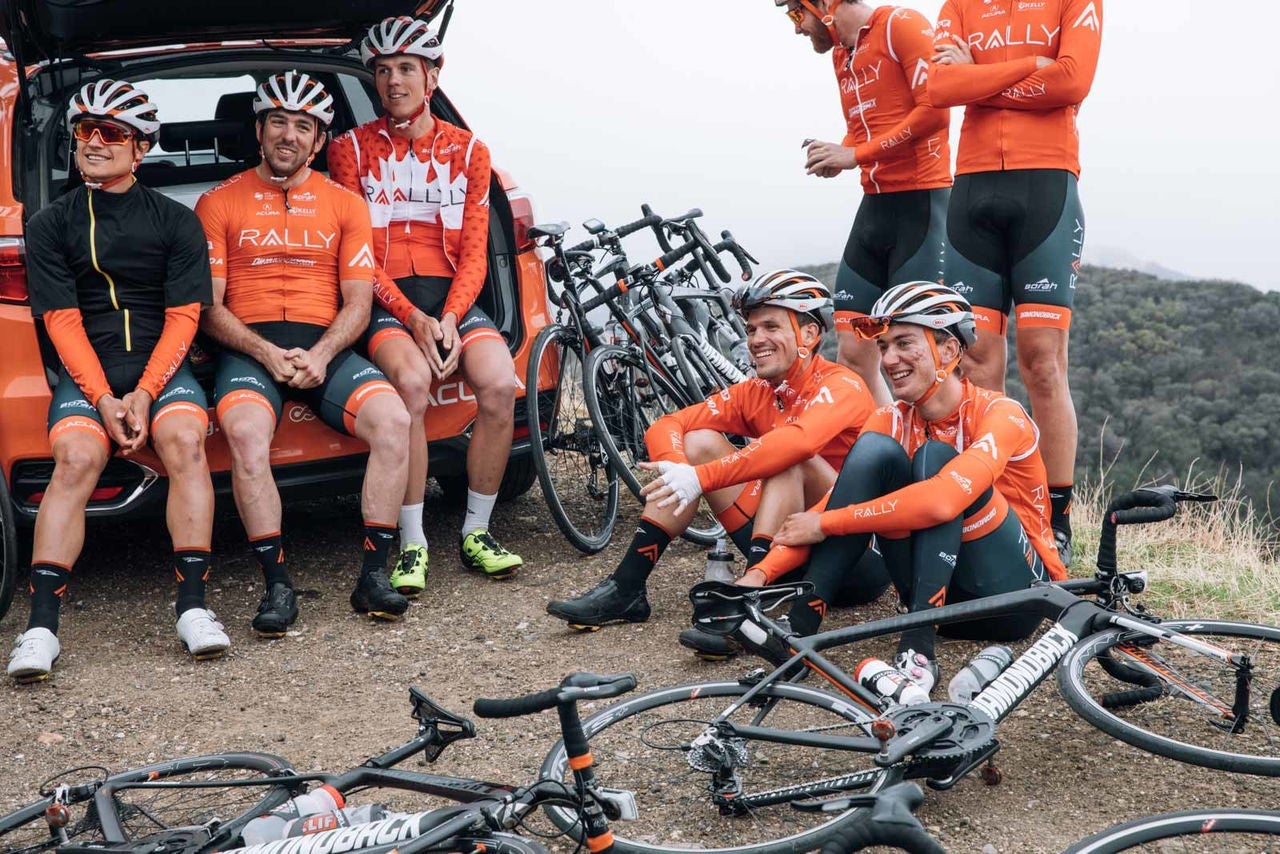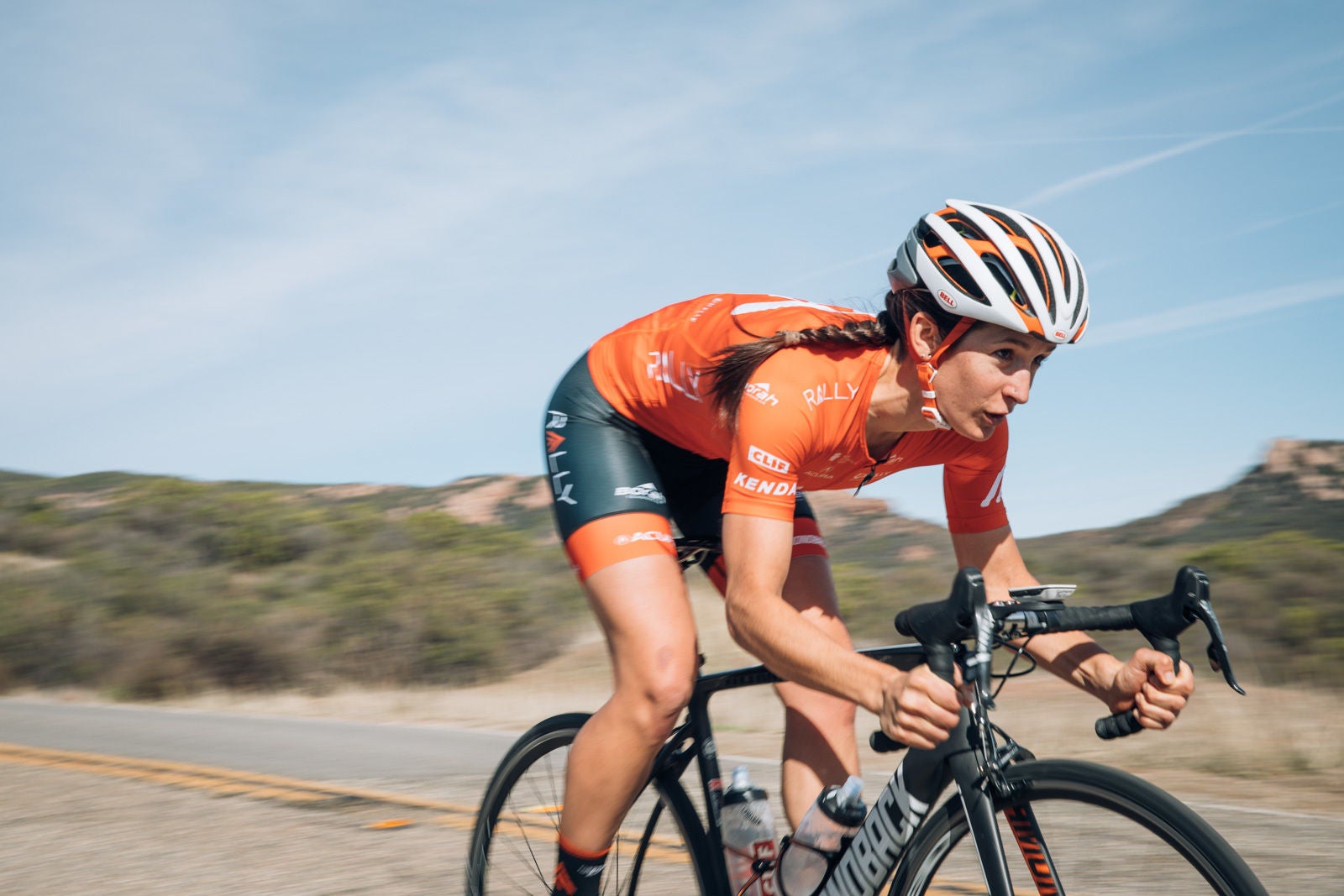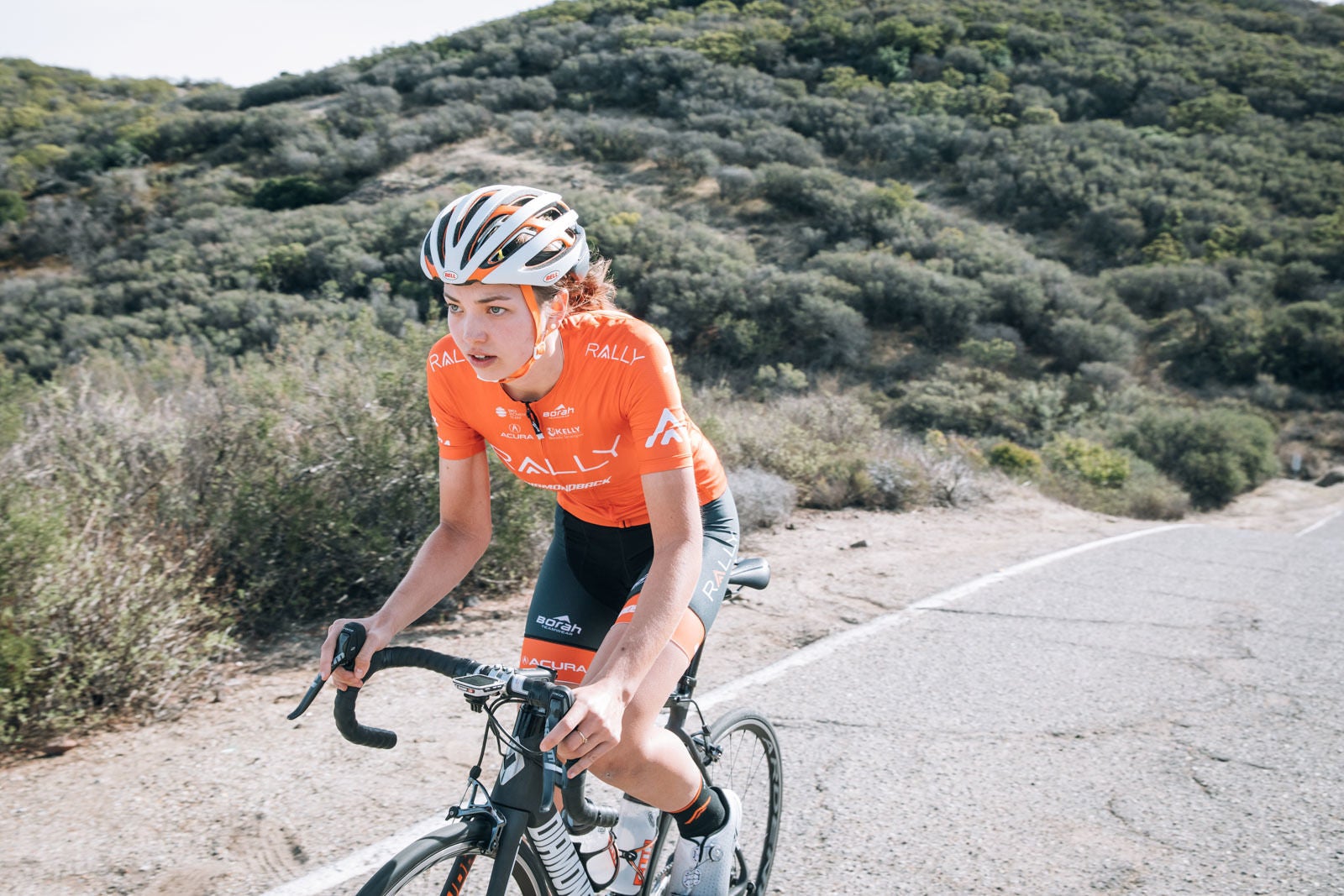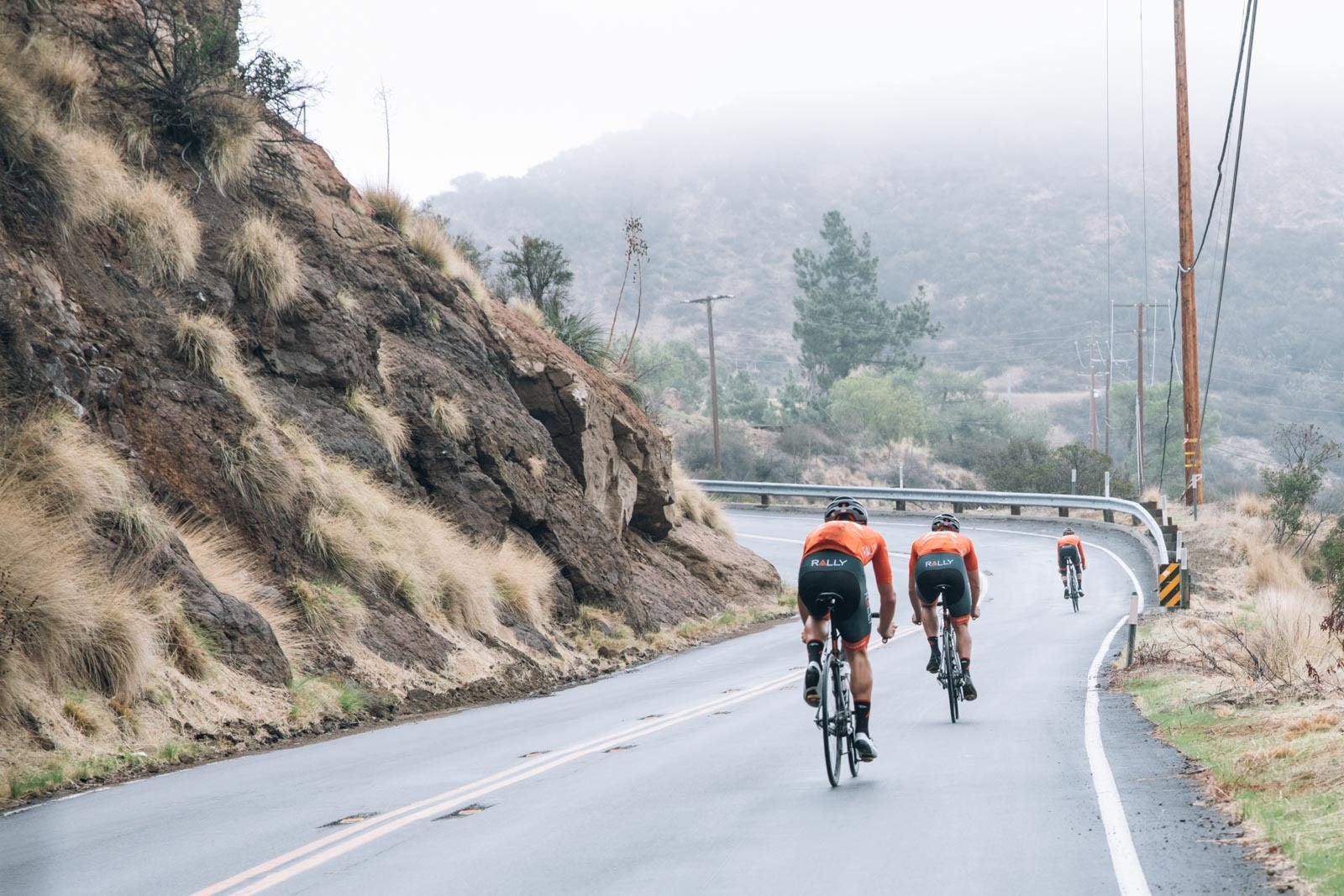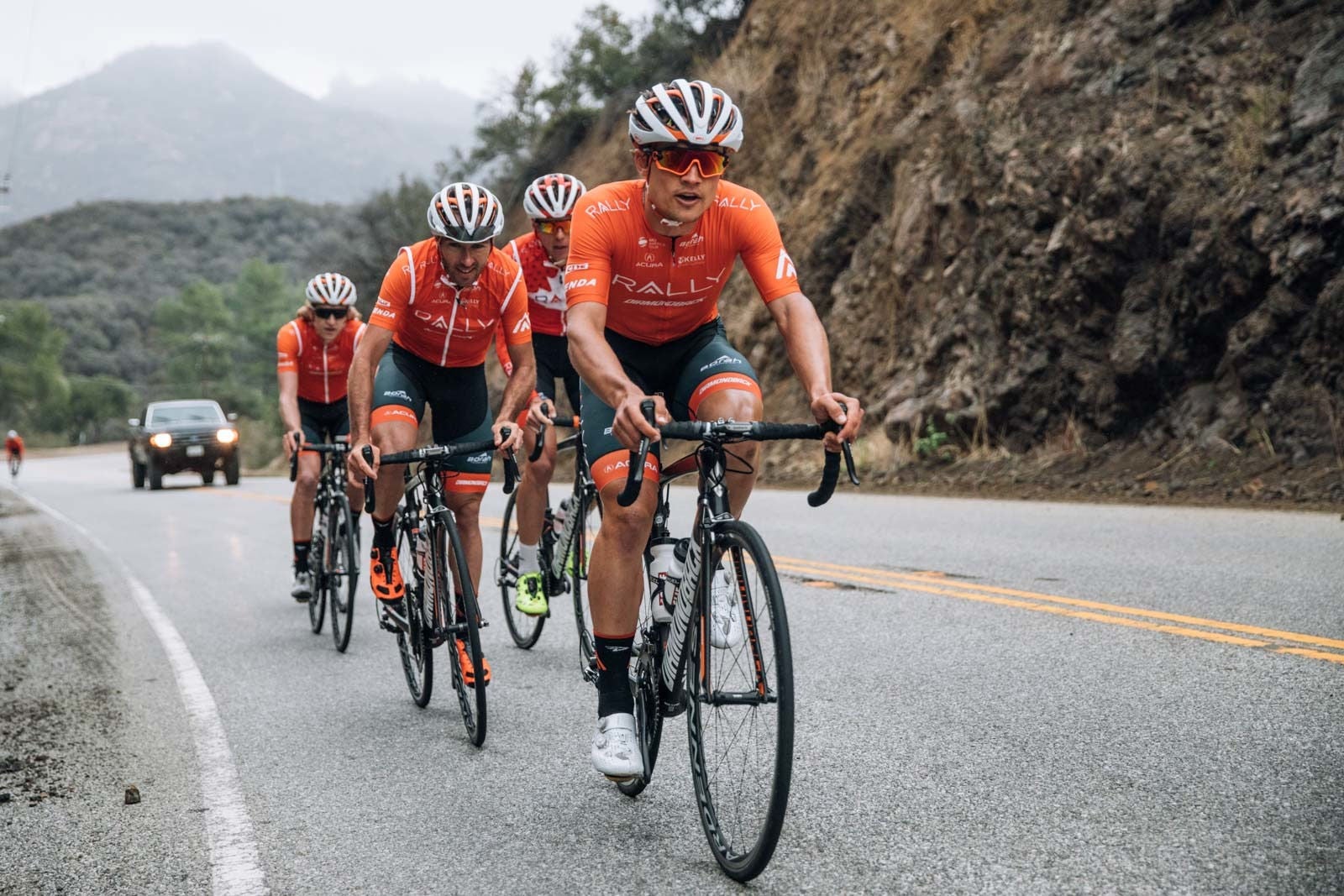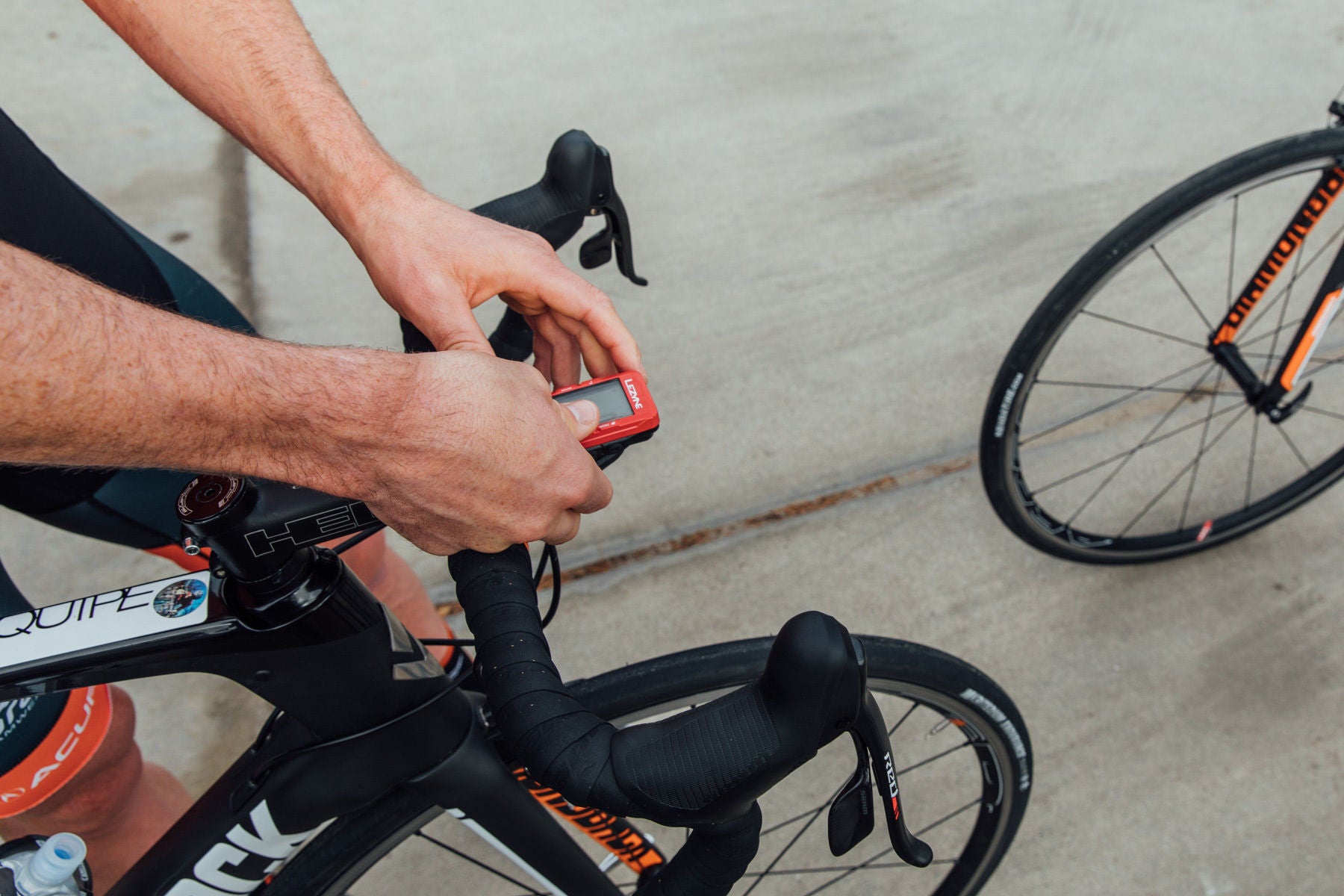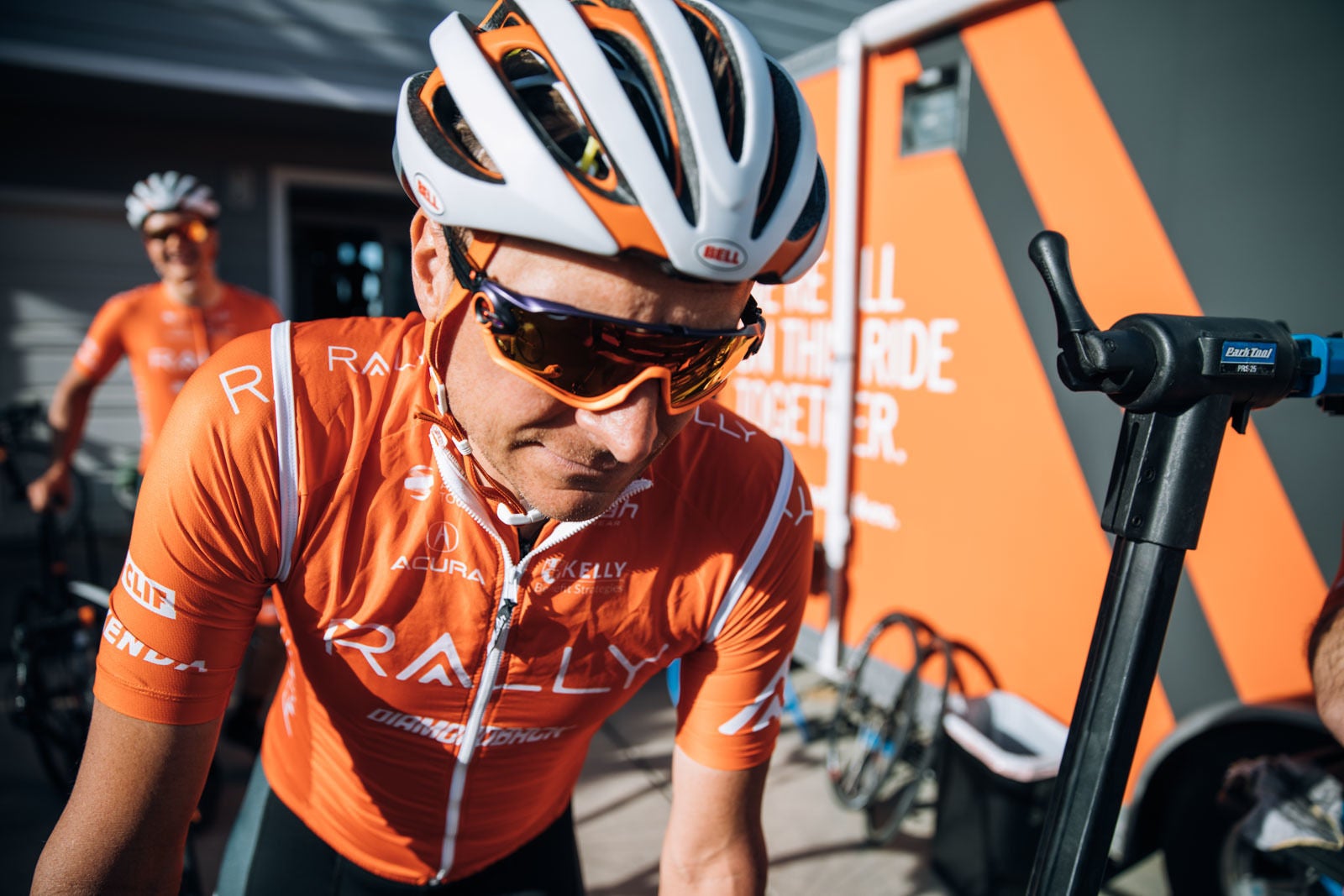Whether you’ve been riding for decades or you’re just starting to pedal around the neighborhood, there’s always room for improvement in your cycling. Even members of the Rally CyclingSM team who have been racing for nearly two decades are still learning new tips and tricks. Here’s some great road riding advice from members of the men’s and women’s teams, sharing tips that they wish someone had clued them in on years ago.
1. Corner Like a Boss
Corners can be the trickiest part of riding for new cyclists. Almost every cyclist deals with some trepidation when heading into a turn, but if you follow this advice, you’ll be cornering more smoothly in no time. To start, focus on the entry to the corner.
“Cornering and braking go hand in hand,” says Erica Allar, who’s been racing for 17 years. “You want to slow down before you’re actually in the turn: You don’t want to brake while turning.” She’s absolutely right. Braking in a corner can be dangerous, as you’ll lose traction and run the risk of crashing.

